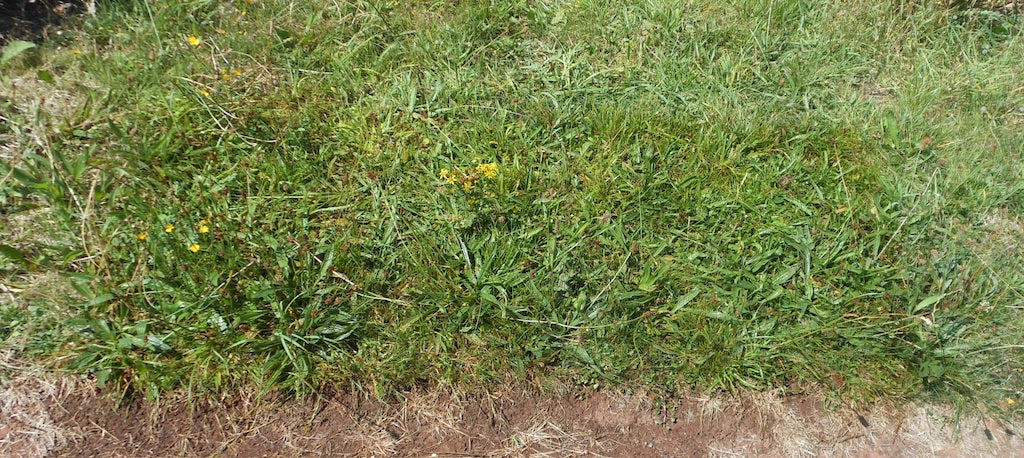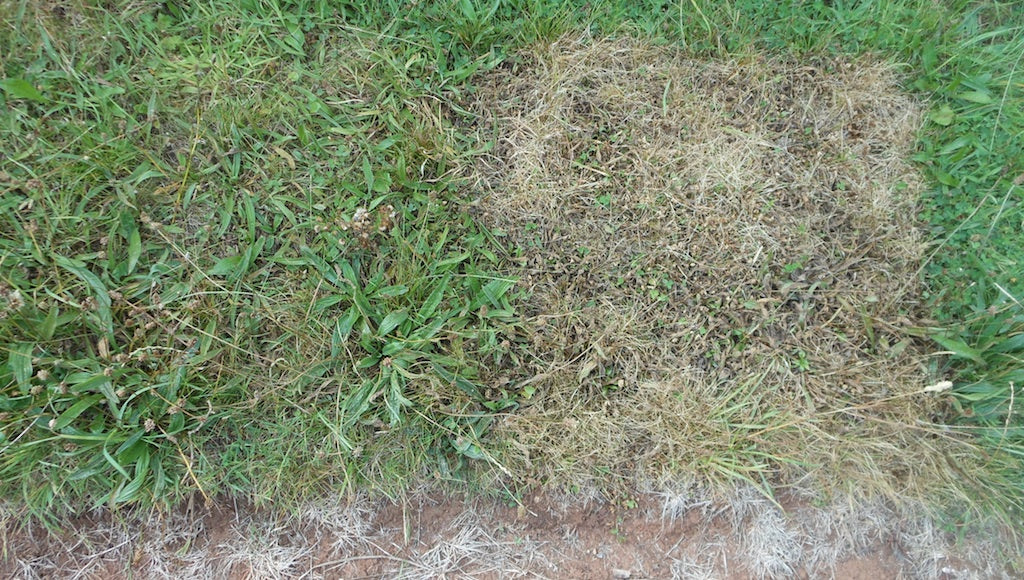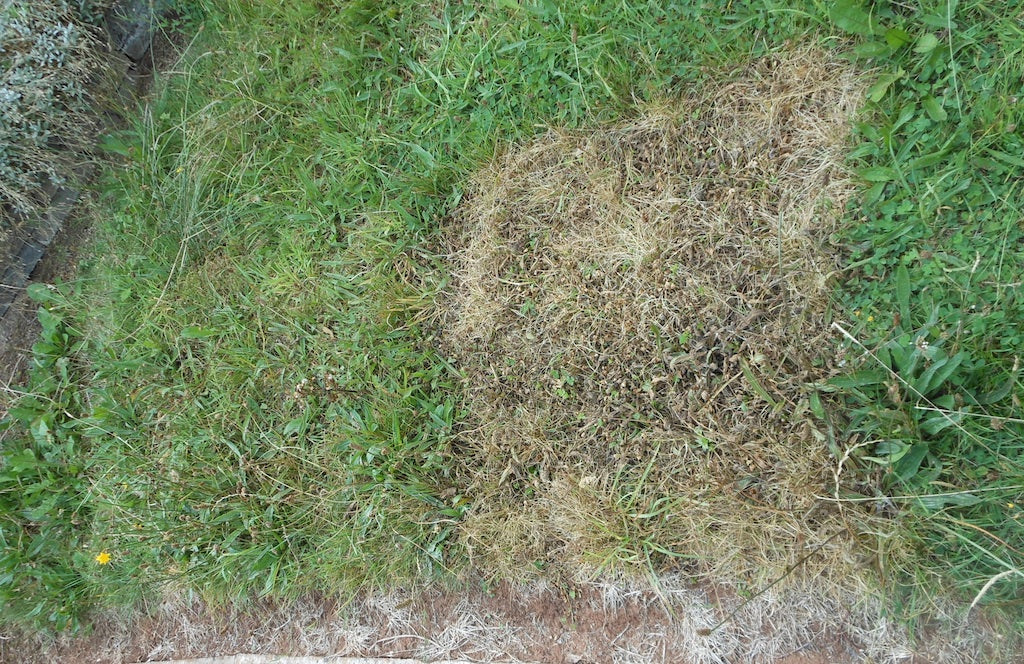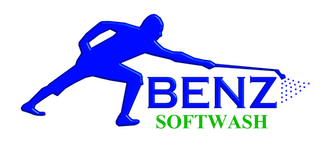How to protect your customer's grass (inc artificial), plants & ponds
Prevention is always better than cure. And the simplest way to care for your customer's plants and grass (including artificial grass – see below) is to minimise spray drift and run-off – and thus reduce the possibility of plants and grass coming into contact with softwash chemicals.
How to minimise the effect of spray drift and run-off
- Gently cover particularly delicate plants that may be exposed to spray drift with a very light sheet. Take great care when covering so as not do damage plants with the sheeting. Do not use a heavy tarpaulin, as the weight of it could crush and damage your customer's plants.
- Minimise spray drift by using the correct Benz nozzle. Our specialised nozzles help to contain the spray of softwash chemical to only the areas where it is needed.
- Use skillful spray techniques to restrict the softwash chemical spray only to the surface being cleaned.
- Divert run-off away from areas of plant life.
- It is also important to drench all plant life that may be some distance away from the treated area but which could conceivably be affected by spray drift. This is because some plants are hyper-sensitive and their leaves will turn brown at the merest whiff of a biocide.
 The "3-Drench" method of preventing harm to plants and grass that may come into contact with softwash chemicals
The "3-Drench" method of preventing harm to plants and grass that may come into contact with softwash chemicals
Drench all vulnerable plants that could possibly be exposed to spray drift or run-off, with copious quantities of fresh tap water:
1) Immediately prior to applying a softwash chemical.
2) Immediately after application of a softwash chemical.
3) Immediately after rinsing the treated surface following treatment with Benz Lightning Cleanze or Tornado Cleanze (do not rinse Benz Bio Cleanze or Perma Cleanze)
Include all hedges, shrubs, grass, flower and vegetable beds that border paths and patios, or are next to wall that is going to be treated, and all other plant life that could conceivably be exposed to spray drift or run-off.
Drench all lawn edges that could be exposed to spray drift and run-off.
Pre and post drenching with a gentle and light spray – not a high pressure jet, which could damage plants – of fresh tap water washes the leaves of your customer's plants and dilutes the chemicals in the ground, reducing the potential for harmful effects to near zero.
Quick tips:
- Bio Cleanze is fully bio-degradable.
- Lightning Cleanze and Tornado Cleanze are formulated with bio-degradable surfactants and do not bio-accumulate.
Mentioning these facts to your customers who may be wary of of having their gardens exposed to chemicals can go a long way to re-assure them that their plants will be safe.
- If you are working as part of a team, have someone drench the area exposed to spray drift or run-off immediately you move on to clean another section of the property.
- If you think an area of vegetation got a particularly heavy dose of spray drift, run-off, or accidental spillage, then soak the ground particularly thoroughly with fresh water to dilute the chemical.
We tested the drenching principle by spilling several litres of 5:1 Benz Lightning Cleanze onto a lawn, then immediately drenching the lawn. No ill-effects were noticed.
Should you apply a liquid fertiliser to plants, to protect them?
No. In our experience it is unnecessary to treat your customer's plants with another product in an unnecessary attempt to protect them, such as a liquid fertiliser.
- Important: Plants vary in the type of nutrition they require, and some react badly to the wrong type of nutrition. So spraying plants with a generic liquid fertiliser could be administering the wrong type of nutrition for your customer's particular plants – and therefore could actually be harmful to them.
- Simply pre and post drenching with fresh water, combined with minimising spray drift and run-off with skillful application techniques, works perfectly well. It is the simplest, fastest, cheapest and most effective way of protecting your customer's plants.
Artificial grass – how to treat it?
Lighting Cleanze – usually at 10:1 – is the simplest and fastest way to get dirty grass clean on the first treatment. Then offer your customer an ongoing "Clean & Maintain" service.
Quick tip: When cleaning an adjacent patio be careful not to create accidental "clean streaks" on artificial grass. The simple solution to avoid this is to pre and post-drench the grass in the same way you would when working next to real grass.
How to soft wash patios and paths close to a fish pond
All softwash cleaning chemicals must be kept away from fish ponds.
Ensure that all chemical containers are kept in a safe working area removed from the area surrounding the pond and from which the public, customers, children and animals are excluded.
Ensure that all chemical mixing is done in this safe area and any spillages are immediately dealt with.
- Do not pressure wash the surrounding paths and patio if this means run-off will enter the pond. Because the water-dirt mixture from pressure washing could disturb the fish and frog spawn.
- Do not allow rinse water to enter the pond as this could harm the plant and fish life.
- Do not allow overspray to reach the pond surface. Cover with a light tarpaulin in necessary. Be especially careful if treating in windy conditions and keep the spray head close to the ground to minimise overspray.
In most situations Bio Cleanze 50:1 or Perma Cleanze 4:1 are going to be the optimal softwash products to use following pre-cleaning with Lightning Cleanze.
Choose a time when rain is unlikely and will offer sufficient time for the treated surface to completely dry. By the time it rains again much of the softwash chemical will have biodegraded and been absorbed by a porous surface, sufficiently so as to not be harmful.
That said, allow a border zone of at least 500 mm from the pond's edge that is not treated, to ensure that any surplus product or rinse water will not reach the pond.
Because all chemicals must be kept out of the pond, gentle low-pressure jet washing away from the side of the pond is one way of mitigating the risk, ensuring that rinse water is moved away from the pond and not into it.
- If children or animals are likely to walk on the treated surface use only a 50:1 dilution of Bio Cleanze (4:1 Perma Cleanze) and exclude them completely until it has been dry for several hours.
- Check if the pond has a filtration system fed by drains located on the patio. Some pond systems take rainwater from surface drains and feed it into the pond. If this is the case, ensure no softwash chemical enters those drains.
-
If Bio Cleanze accidentally enters a pond in which there is a lot of algae, the algae may break down some of the active ingredient. So it could be safe to introduce new fish into the same water. But if no-one knows for sure how contaminated the water is, the only totally safe and sensible course of action would be to empty the pond and refill.
Could Benz Tornado Cleanze be used near a fish pond?
By taking great care and using a low pressure jet washer skilfully when rinsing, Tornado Cleanze can be used closer to the edge of a fish pond than other softwash chemicals because it's gel nature does not run so much.
Then skilful use of a jet washer to rinse the product away from the side of the pond – ensuring that rinse water is moved away from the pond and not into it – will further mitigate the risk of the chemical entering the fish pond.
Tornado Cleanze can sometimes produce considerable foaming when being rinsed, so use low pressure when rinsing and keep agitation to a minimum.
Quick tips:
- Ask your customer to remove the fish to a safe location for the duration of treatment.
- Ensure the pond water will not receive overspray when treating the patio, which can happen if there's a strong wind and the jet stream is not kept close to the ground.
- Find out if the pond has a filtration system fed by drains located on the patio. Some pond systems take rainwater from drainage systems and feed it into the pond. If this is the case, ensure soft wash chemicals are not allowed to enter those drains.
- When soft washing a roof, re-direct the gutter/downpipe into a storage vessel or foul drain, ensuring it does not flood onto the patio and from there run into the fish pond.
Educate your customers
Educate your customers on ways to keep their paths and patio clean – for example, by immediately removing leaves and grass cuttings, keeping the underside of any plant pots placed on the patio clean, etc.
Offer a "Clean & Maintain" programme
By giving a patio and paths regular "Clean & Maintain" soft wash treatments every 6-18 months, your customers will enjoy a permanently clean property all year round; and you, the contractor, will enjoy regular repeat business.
Controlled tests of the effectiveness of pre and post drenching plant life
To ensure that in actual practice Bio Cleanze is safe for plant life, we conducted these tests using vastly more biocide than would ever be the case from spray drift or run-off.
Area to left of above photo: We saturated the area with fresh water, then applied 2 litres of Bio Cleanze – 25:1 mix. We waited for 10 minutes, then rinsed off with copious fresh water.
Area to right of photo: We did not first wash with water and did not rinse after applying the same quantity of biocide.One week later the dramatic results speak for themselves. The area we treated with water went slightly dark for a few days and some discoloration of the grass is noticeable but no plant life died.
Note: We ran the same test with Lightning Cleanze and obtained similar results.
These extreme tests – using quantities of Bio Cleanze and Lightning Cleanze far in excess of the dosage customer's plants could reasonably be expected to receive in working practice – conclusively proved the importance and effectiveness of pre and post drenching plant life before applying softwash chemical treatments.
A happy ending: Both areas of grass recovered fully without re-seeding. Even the area you see to the right of the photos recovered completely with the grass regrown in only a few weeks.
Click here to get more practical soft washing how-to tips
How to find answers to most soft washing questions: Simply enter a relevant "keyword" or short phrase (e.g. keyword for above link = "how to") into our in-site Search Engine (the magnifying glass icon on main menu)
The Benz Softwash range of soft wash cleaning products:
- Bio Cleanze
- Lightning Cleanze
- Tornado Cleanze
- Oxy Cleanze
- Window Cleanze
- Perma Cleanze
- Roof moss scrapers
- Softwash nozzles
- All Benz unique soft washing equipment
- The Benz fully illustrated soft washing how-to manual
You can order Benz Softwash chemicals & equipment online or by phone:
GB (England, Scotland, Wales)
Phone: 0800 70 74 222
Online: www.benzsoftwash.co.uk
Ireland and other countries
Phone: 00353 214 622 978
Online: www.benzsoftwash.com
Lines open Monday - Friday, 9am – 5pm
Please note: The above numbers are for orders only (click here for tech support)





